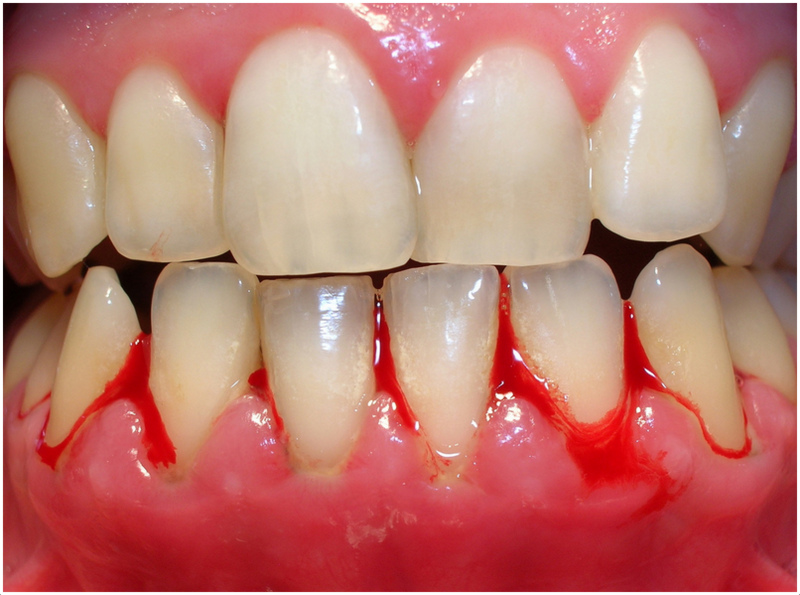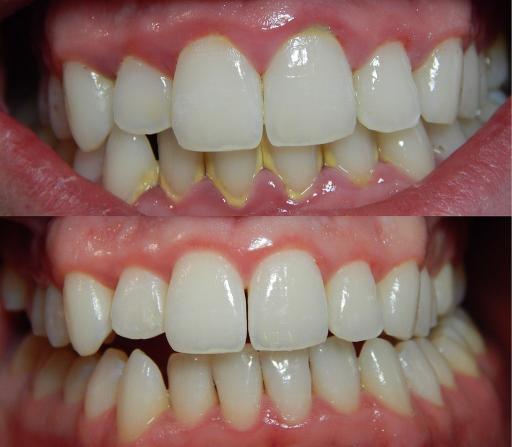Dentist, Oral Health
Gingivitis: Causes, symptoms, and treatment
Christian Nordqvist
- Types
- Causes
- Signs and symptoms
- Diagnosis
- Treatment
- Complications
Types of gingivitis
There are two main categories of gingival diseases:
Dental plaque-induced gingival disease: this can be caused by plaque, systemic factors, medications, or malnutrition.
Non-plaque induced gingival lesions: this can be caused by a specific bacterium, virus, or fungus. It might also be caused by genetic factors, systemic conditions (including allergic reactions and certain illnesses), wounds, or reactions to foreign bodies (such as dentures). Alternatively, no cause might be found.
What causes gingivitis?
The accumulation of plaque and tartar
The most common cause of gingivitis is the accumulation of bacterial plaque between and around the teeth; the plaque triggers an immune response, which, in turn, can eventually lead to the destruction of gingival (gum) tissue. It may also, eventually, lead to further complications, including the loss of teeth.
Dental plaque
Dental plaque is a biofilm that accumulates naturally on the teeth. It is usually formed by colonizing bacteria that are trying to stick to the smooth surface of a tooth. Some experts believe that these bacteria might help protect the mouth from the colonization of harmful microorganisms. However, dental plaque can also cause tooth decay, and periodontal problems such as gingivitis and chronic periodontitis, a gum infection.
When plaque is not removed adequately, it can harden into calculus (tartar – it has a yellow color) at the base of the teeth, near the gums. Calculus is harder to remove, and can only be removed professionally.
Plaque and tartar eventually irritate the gums, this eventually causes inflammation of the part of the gums around the base of the teeth. This means that the gums might easily bleed.
Other causes and risk factors
Changes in hormones – which may occur during puberty, menopause, the menstrual cycle, and pregnancy. The gingiva might become more sensitive, raising the risk of inflammation.
Some diseases – such as cancer, diabetes, and HIV are linked to a higher risk of developing gingivitis.
Drugs – oral health may be affected by some medications, especially if saliva flow is reduced. Dilantin (anticonvulsant), and some anti-angina medications can cause abnormal growth of gum tissue.
Smoking – regular smokers more commonly develop gingivitis compared with non-smokers.
Age – the risk of gingivitis increases with age.
Poor diet – especially people with vitamin C deficiency.
Family history – experts say that people whose parent(s) has/had gingivitis, have a higher risk of developing it too. This is thought to be due to the type of bacteria we acquire during our early life.
Signs and symptoms of gingivitis
In mild cases of gingivitis, there may be no discomfort or noticeable symptoms.
Signs and symptoms of gingivitis might include:
- Gums are bright red or purple.
- Gums are tender and sometimes painful to the touch.
- Gums bleed easily when brushing teeth or flossing.
- Halitosis (bad breath).
- Inflammation (swollen gums).
- Receding gums.
- Soft gums.
Diagnosing gingivitis
A dentist or oral hygienist will check for gingivitis symptoms, such as plaque and tartar in the oral cavity.
Checking for signs of periodontitis may also be recommended; this may be done by X-ray or periodontal probing (an instrument that measures pocket depths around a tooth).
Treatment options for gingivitis
If the patient is diagnosed early on, and treatment is prompt and proper, gingivitis can be successfully reversed.
Treatment involves care by a dental professional, and follow-up procedures carried out by the patient at home.
Gingivitis care with a dental professional:
Plaque and tartar are removed. This is known as scaling. Some patients may find scaling uncomfortable, especially if tartar build-up is extensive, or the gums are very sensitive.
The dental professional explains to the patient the importance of oral hygiene, and how to effectively brush their teeth and floss.
Periodically, they may follow up on the patient, with more frequent cleanings if necessary.
It is also important to fix teeth so that oral hygiene can be done effectively.
Some dental problems, such as crooked teeth, badly fitted crowns or bridges, may make it harder to properly remove plaque and tartar (they may also irritate the gums).
What the patient can do at home:
- Brush teeth at least twice a day.
- Bear in mind that in most cases, electric toothbrushes do a better job than we can do on our own.
- Floss teeth at least once a day.
- Regularly rinse mouth with an antiseptic mouthwash. Ask a dentist to recommend one.
Possible complications from gingivitis
In the vast majority of cases, if gingivitis is treated and the patient follows the dental health professional’s instructions, there are no complications. However, if the condition is left untreated, gum disease can spread and affect tissue, teeth, and bones, leading to periodontitis.
Complications can include:
- Abscess in the gingiva.
- Abscess in the jaw bones.
- Infection in the jaw bone or gingiva.
- Periodontitis – this is a more serious condition that can lead to loss of teeth due to bone loss.
- Recurrent gingivitis.
- Trench mouth – ulceration of the gums caused by bacterial infection.
Several studies have linked gum diseases, such as periodontitis, to cardiovascular diseases, including heart attack or stroke. Other reports have found an association with lung disease risk.



